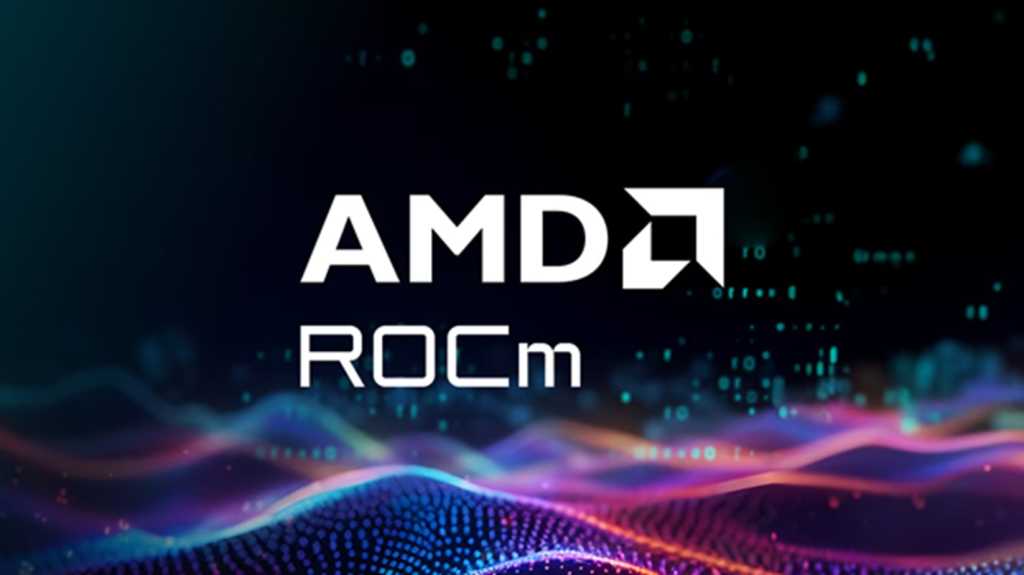In a significant shift within the tech landscape, AMD is making moves to bolster its position in artificial intelligence (AI) computing. The company, traditionally known for its powerful hardware, including the Ryzen AI Max and Threadripper series, is expanding its software capabilities with the release of ROCm 7. This new iteration is set to enhance AI inferencing capabilities across AMD’s product line, aiming to directly compete with Nvidia’s industry-standard CUDA system.
What is ROCm?
Radeon Open Compute (ROCm) is AMD’s open-source software stack tailored for high-performance computing, particularly focused on AI workloads. Initially, AMD’s efforts in artificial intelligence were skewed towards enterprise solutions, leaving a gap in support for consumer-grade systems. However, as AMD executives pointed out, the landscape of AI computation is evolving rapidly, and so must the software that supports it.
By launching ROCm 7, AMD is not just improving performance—it’s also signaling a new commitment to developers who favor Windows. Ramine Roane, AMD’s Corporate Vice President of AI Solutions, acknowledged past miscalculations regarding developer preferences, stating, “We realized that developers actually really care about [support for Windows].” This acknowledgment indicates AMD’s strategic shift towards making its SDK more accessible for mainstream developers and users alike.
ROCm 7: Key Features and Improvements
The latest iteration of ROCm promises a substantial 3X performance boost in AI inferencing, a crucial metric for many applications from machine learning to deep learning. This improvement is especially relevant given that inferencing chips are evolving faster than those designed specifically for training AI models. According to AMD, ROCm 7 showcases impressive enhancements: a 3.2X increase in performance when using the Llama 3.1 model with 70 billion parameters, a 3.4X boost with Qwen2-72B, and up to a staggering 3.8X with DeepSeek R1, making it an attractive option for developers and engineers alike.
One of the factors driving AMD’s decision to enhance ROCm is the growing adoption of deep learning models that require substantial computational resources. With companies like OpenAI successfully popularizing large language models (LLMs), the need for efficient inferencing is critical. By integrating ROCm with popular machine learning frameworks like PyTorch and ONNX Runtime, AMD is making it easier for developers to leverage its hardware capabilities without the steep learning curve often associated with such technologies.
Market Reactions and Community Response
The response from industry analysts and developers has been largely positive. Many have long criticized AMD for lagging behind Nvidia in the software domain, particularly for desktop and enterprise AI applications. The expansion of ROCm into Windows environments and its planned support in major Linux distributions (such as Ubuntu, Red Hat, and SuSE) highlights AMD’s recognition of the necessity to engage with a broader developer community. This move could potentially shift market dynamics, inviting more developers to optimize their applications for AMD’s hardware.
Moreover, the open-source nature of ROCm positions it favorably within a landscape increasingly driven by collaborative development and community-driven enhancements. As AMD continues to refine ROCm, developers can contribute to its evolution, potentially leading to innovations that benefit both the community and AMD’s market presence.
Challenges Ahead
Despite the promising advancements, AMD faces notable challenges. One significant hurdle is the lack of consumer-focused applications that showcase the capabilities of its AI hardware. Unlike Nvidia, which has invested in applications like AI Playground that cater to end-users, AMD currently does not have a robust consumer application strategy. Roane noted, “No specific plans right now, but it’s definitely a direction we would like to move.” If AMD aims to penetrate the mainstream AI market effectively, developing such applications will be essential.
Additionally, competing against Nvidia’s well-established ecosystem presents an ongoing challenge. While ROCm shows promise, the adoption rate among developers may be slow without the backing of compelling, user-friendly applications that facilitate a smoother entry into the AI field.
Looking Ahead: The Future of AI at AMD
The future for AMD in AI computing looks bright with the introduction of ROCm 7, yet it will require strategic planning and execution to fully realize its potential. As the company works to enhance its software offerings and expand its developer outreach, it will be crucial to maintain momentum and continue to innovate.
In conclusion, AMD’s journey into the AI realm highlights a broader shift in the tech industry, where hardware capabilities must align with robust software ecosystems to achieve success. As AMD pushes forward, the collaboration between hardware and software will ultimately determine its standing in the competitive landscape of artificial intelligence.
Quick Reference Table
| Feature | ROCm 7 Improvements |
|---|---|
| Performance Boost (Llama 3.1 70B) | 3.2X |
| Performance Boost (Qwen2-72B) | 3.4X |
| Performance Boost (DeepSeek R1) | 3.8X |
| Support for Frameworks | PyTorch, ONNX Runtime |
| Deployment Platforms | Windows, Ubuntu, Red Hat, SuSE |
As AMD pushes forward with ROCm and AI technologies, it stands to reshape its identity from merely a hardware manufacturer to a compelling player in AI software development as well.

